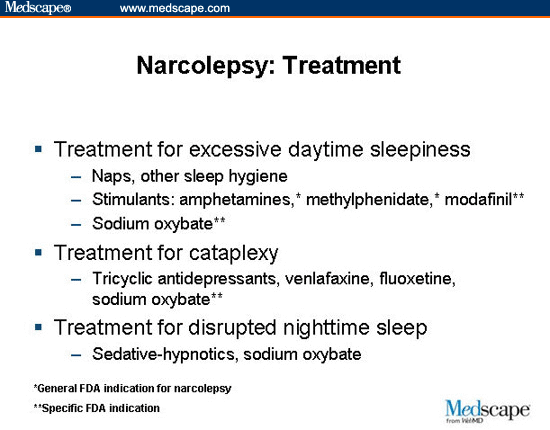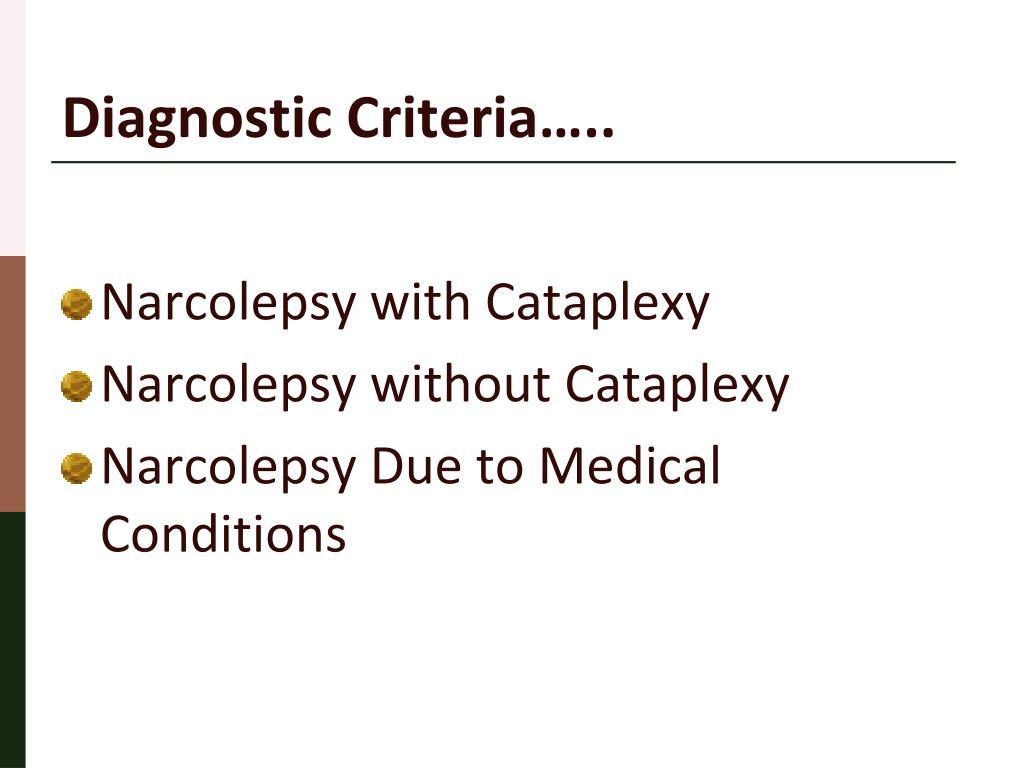

Cataplexy is characterized by sudden muscle paralysis without loss of consciousness. The episodes are brief and go away by themselves. Narcolepsy occurs when an animal suffers from excessive daytime sleepiness, lack of energy, or brief losses of consciousness. Narcolepsy.Narcolepsy and cataplexy are disorders of the nervous system. (2016). Treatment options for narcolepsy. You can learn more about how we ensure our content is accurate and current by reading our editorial policy. We link primary sources - including studies, scientific references, and statistics - within each article and also list them in the resources section at the bottom of our articles. Medical News Today has strict sourcing guidelines and draws only from peer-reviewed studies, academic research institutions, and medical journals and associations.

antidepressants for cataplexy, which include selective serotonin reuptake inhibitors and serotonin and norepinephrine reuptake inhibitors ( SSRIs and SNRIs).modafinil ( Provigil) and armodafinil (Nuvigil) for sleepiness.Some recent therapies that doctors use to treat narcolepsy include: automatic behaviors, where a person will continue doing an activity without conscious awareness, resulting in impaired performanceĪccording to a 2016 study, treatment for both types of narcolepsy generally focuses on treating a person’s symptoms.hallucinations - either before falling asleep or during sleep paralysis - that can be unsettling and involve the vision and other senses.The NINDS adds that other symptoms can include: They may fall asleep during an activity and stay asleep for a few seconds to a few minutes. a sudden loss of muscle strength or toneĪs the condition gets worse, the symptoms can interfere with a person’s regular activities.an irresistible urge to sleep, known as a “sleep attack”.periods of tiredness, low energy, or drowsiness.However, over time, a person may experience varying symptoms - the severity of which can keep changing. The symptoms are often mild initially and gradually build in intensity.Įxcessive sleepiness is typically the first symptom that a person will experience. The NORD states that symptoms may come on slowly, appearing one at a time over the course of several years. Narcolepsy can affect people differently in terms of symptom severity.

Narcolepsy with cataplexy can present with symptoms similar to those of other, unrelated health conditions. Doctors used to refer to type 1 narcolepsy as narcolepsy with cataplexy and to type 2 narcolepsy as narcolepsy without cataplexy.Īlthough the names of these types have changed, doctors still define the type of narcolepsy by whether or not a person experiences muscle weakness in addition to sleepiness. The NINDS explains that there are two major types of narcolepsy: type 1 and type 2. When it affects the whole body, it can cause the person to collapse. The Narcolepsy Network adds that cataplexy causes a sudden loss of muscle tone - either throughout the body or in certain muscles - in response to a strong emotion. The other common symptoms are a specific hallucination that occurs just before falling asleep or immediately after waking and a brief period of paralysis on waking up. Cataplexy is one of three symptoms commonly associated with narcolepsy. The National Organization for Rare Diseases (NORD) uses the term cataplexy to refer to a sudden, extreme muscle weakness.


 0 kommentar(er)
0 kommentar(er)
